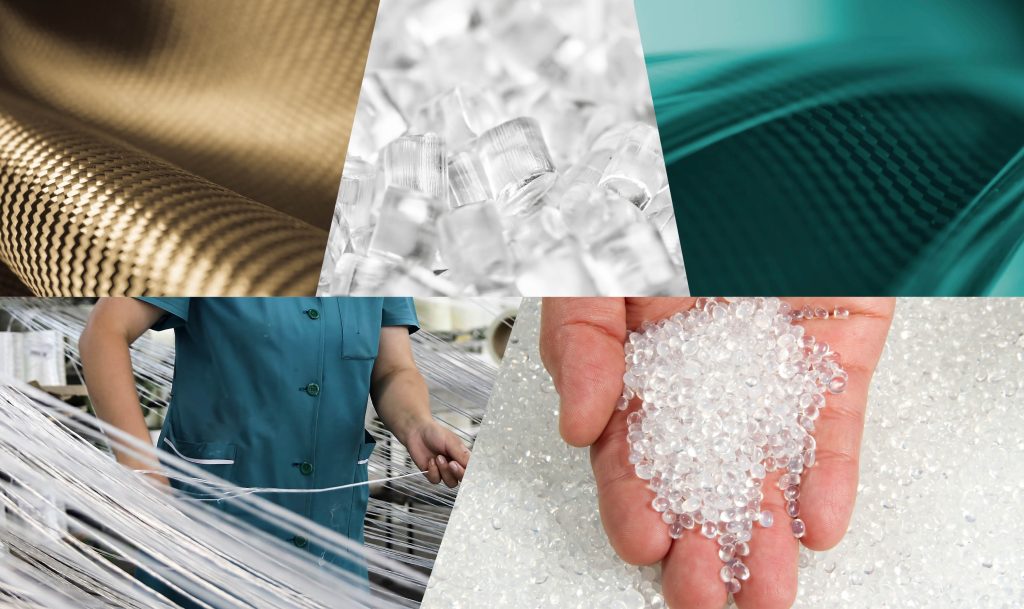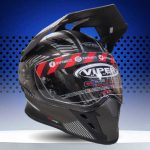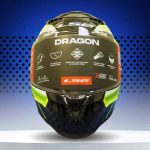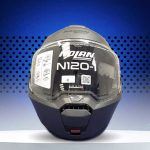Don’t judge a helmet by its outer shell material. Here’s why.
The human head is a tricky body part. It is vital for life… amputation really isn’t an option. And damage can have life-limiting repercussions that impacts on families and friends, not just the owner. It is also awkward to measure.
An adolescent head weighs around 6kg. A female or “average build male” head weighs around 7kg. A large, stocky, well-built male can support a head of 8kg or over. For this reason, human anatomy has evolved to ensure that the neck muscles and structure can carry the load.
This is the reason why the weight of a motorcycle helmet is often mentioned as an important consideration in a purchase decision. The strain of the additional weight of a helmet can make riding uncomfortable and stressful. Even a few grammes difference, depending on the shape and style of the helmet, can make all the difference to a helmet feeling “easy to wear”.
Motorcycle helmets are made from a variety of materials for their outer shell, each chosen to balance factors such as initial protection, weight, durability, and cost. The outer shell is the first line of defence in an accident; a smooth outer shell helps the rider to slide along the ground rather than grip and rotate (excessive rotation can cause neck and brain injury). The shell is also designed to hold the inner padding and helmet lining materials securely in place in contact with the wearer’s scalp, which is how the impact forces are absorbed and redistributed around the head, preventing the transfer of a traumatic bash into soft brain tissue. The inner padding and lining structure are the second line of defence but is equally important as the reason for a helmet feeling “easy to wear”.
The five most common materials used in motorcycle helmet outer shells are:
- Polycarbonate
- Fibreglass
- Carbon fibre
- ABS (Acrylonitrile Butadiene Styrene) or “thermo plastic”
- Kevlar

Why are helmet outer shells made of different materials?
Performance vs. Cost: Higher-end materials like carbon fibre and Kevlar provide better protection and are lighter in weight but come at a higher cost. Polycarbonate and ABS are more affordable, but they are heavier and may offer less protection in some circumstances.
Weight: Weight plays a role in comfort, especially for long-distance or high-speed riding. Lighter helmets reduce rider fatigue from neck strain during long rides.
Durability and Longevity: Fibreglass and Kevlar helmets are generally more durable than plastic-based helmets, offering better resistance to daily wear and tear. Prolonged exposure to UV light will degrade some materials faster than others. A helmet left on a shelf in sunshine can deteriorate rapidly, unseen to the owner. (Bonus tip: always use a soft cloth bag to cover your helmet when not in use, and store in a cool dark place).
Aesthetic Appeal: Carbon fibre offers an attractive premium look, whereas plastic compound helmet shell can take on colours and paint effects and can be easily moulded to provide greater style options.
Does the outer shell material make a difference to the SHARP star rating?
The type of the material used for a motorcycle helmet’s outer shell will affect its impact protection characteristics. It isn’t a surprise that helmets made with Kevlar or carbon fibre usually perform well in the SHARP tests. However, this is only part of the construction of a helmet. The lining and inner padding materials play an equally important role in the overall safety performance of a helmet. Manufacturers work hard at combining materials for the outer shell and lining, designing their structure and shape to work in unison to achieve the desired level of impact protection in a helmet. So, the shell material is just one aspect of a helmet design contributing to a SHARP star rating.
Regardless of what the outer helmet shell is made of, whether a helmet fits or is comfortable should be a rider’s first decision points when selecting a helmet. Fit and comfort have more to do with the lining materials of a helmet than the outer shell. The difference in weight between two helmets of say 200g might sound a lot, but only the personal experience of trying a helmet on before a purchase can really give you an idea of whether this is significant or not to you.
At a glance, here is a comparison of the most common materials used in motorbike helmets:
| Material | Impact absorption | Cost | Weight | Strength & Durability |
| Polycarbonate | Low | Low | Low | Good |
| Fibreglass | Good | High | Low | High |
| Carbon fibre | Excellent | High | Very Low | High |
| Kevlar | Excellent | High | Low | High |
| ABS | Low | Low | Medium | Good |
This table contains interesting information, but it isn’t enough information for a rider wanting to make an informed choice about which helmet would suit them best. The SHARP star rating helps guide buyers to make an initial selection of helmets to try before they buy. SHARP advises riders to choose helmets based on their individual needs, balancing safety with comfort and budget.







